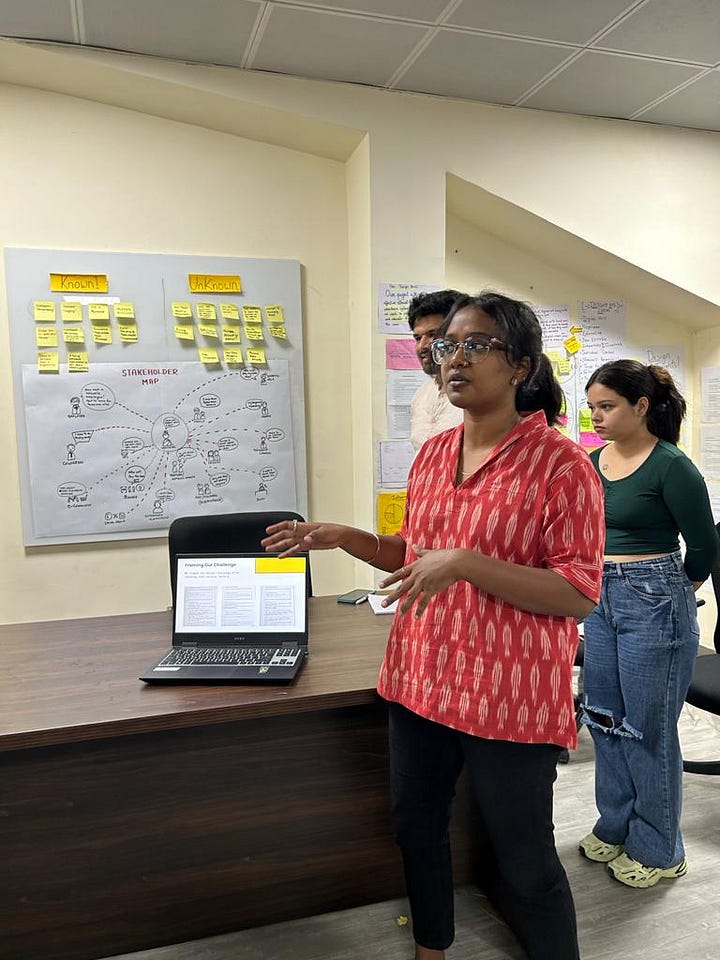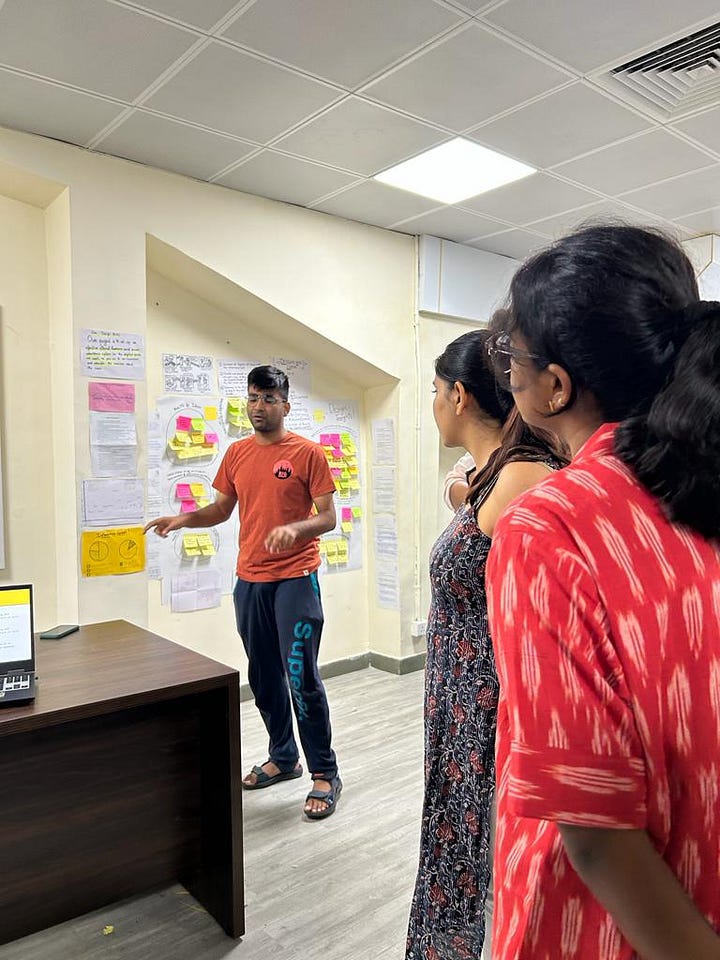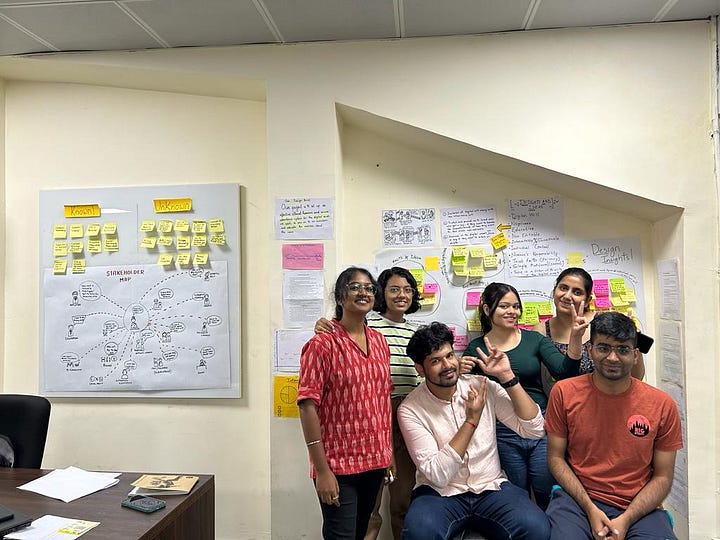The week of doing only the "Design thinking"
Week 5: Module 5: Design thinking, M.Des. XR design, IIT Jodhpur. And also this is week 1 of 3.
It felt hither and thither when we began working on the design brief that was given to us by Prof. Jhumkee Sengupta Iyengar. “Trust the process, you will get there,” she said with a smile on her face. And as an ardent believer of the “Process”, I did the same.
The Design Challenge
The design challenge fascinated me way too much because this one problem had been hiding in plain sight and was one that we often overlooked.
We accumulate a lot of digital assets in our lifetime, aside from physical assets. They occupy huge amounts of space and leaving them there at the end of our lives is not only an unsustainable proposition, but it's not an easy task for our successors to manage either.
Therefore our Design challenge was to:
Research the context and situation around digital assets and people's attitudes towards them.
Understand and analyze mindsets, motivations, needs, and gaps.
Design a solution that is right from people, business, and technology perspectives.
The Known and the Unknown
With very little to no idea of what we were looking for, our team (Souparna Roy, Shreya Saboo, Sukanya Hari, Tamanna Pandita, Himanshu Raj) jumped right into the task at hand, racing against the timer of about 10-12 minutes. It was such a challenge to start with very little knowledge on the topic, but we all managed to get a good amount of knowns and unknowns regarding the design problems figured out.
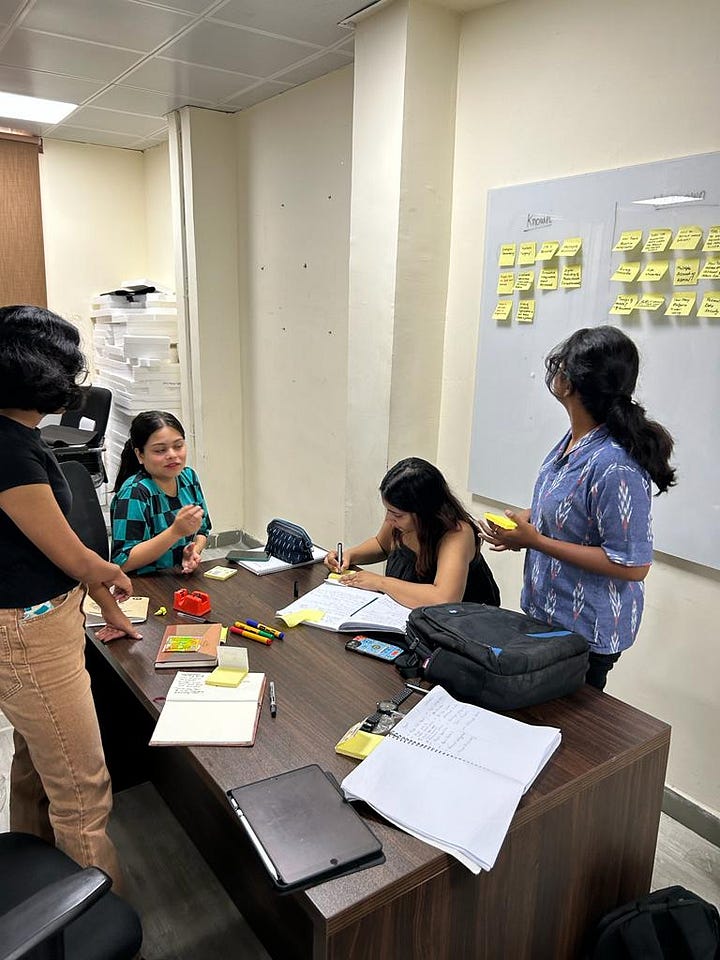
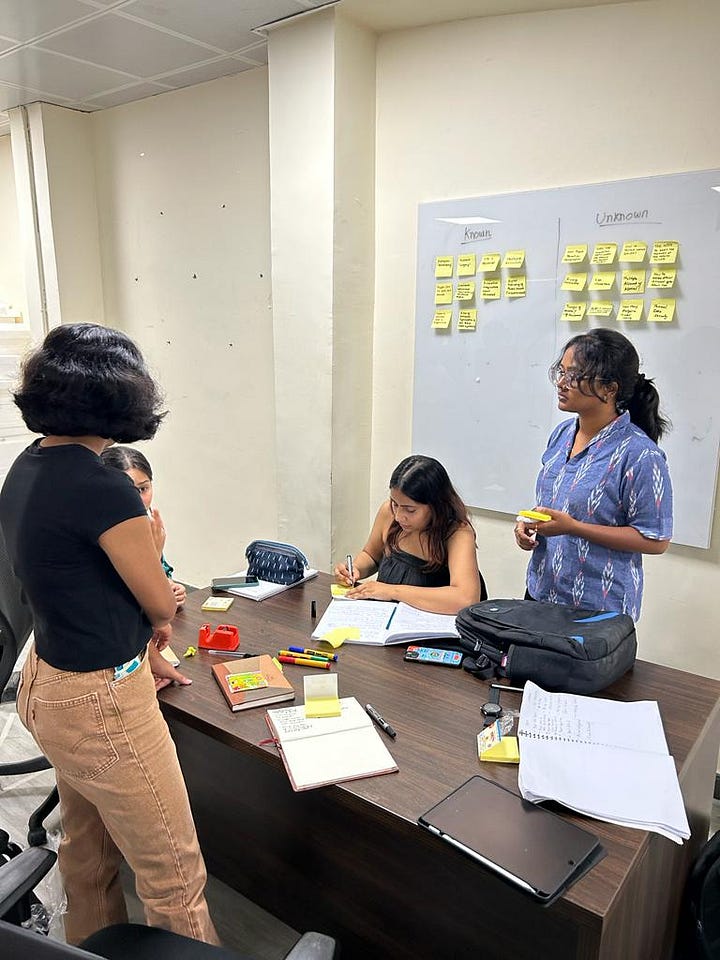
The Stakeholder Map
It was time to create a stakeholder map of the design problem at hand. Visualizing the various perspectives and dialogues of the stakeholders was a great activity. It allowed us to put ourselves in the shoes of different people related to the design.
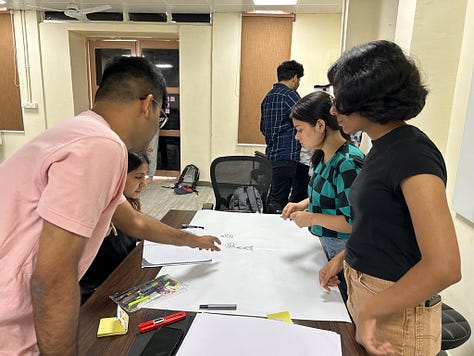

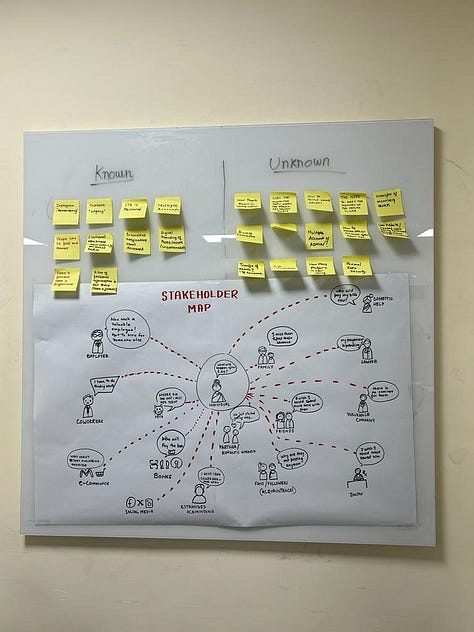
Framing the Design Challenge (Just Do It)
We went on to frame the design problem into a one-liner with the knowledge we had gathered and understood from the previous activities. We did see progress from where we started but also were kind of unaware of where we were headed or if where we were heading was the right direction. But the instructions were very clear: don’t think much, just do it.
We framed a questionnaire with respect to the design brief we had in hand and went on to conduct about 15 user interviews across our campus. We spoke to people of varied age groups to understand different perspectives and awareness levels. We were unknowingly picking up great user interview skills on the way and were getting the hang of how to handle sensitive questions that were a major part of our questionnaire. After two whole days of user interviews, it was time to collate all the collected data to find out if there were any patterns.
User interviews
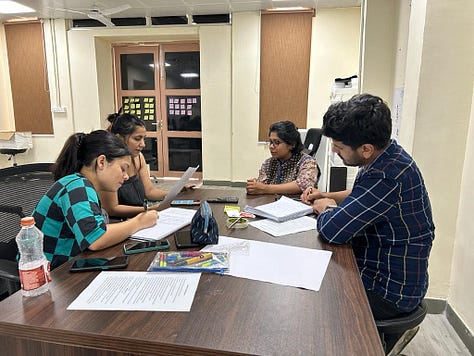
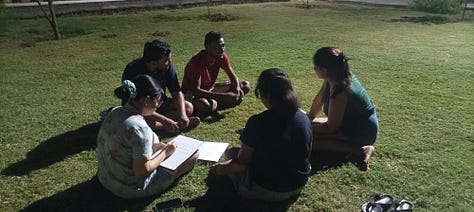
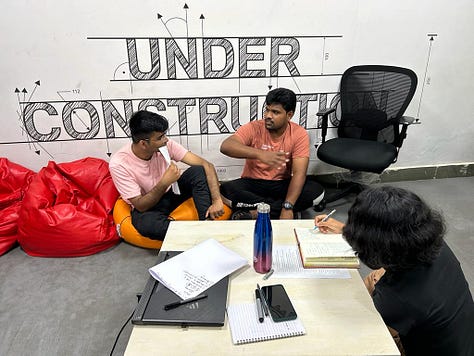
The Revelations
When all the data sheets were put on the table, we were able to identify recurring patterns, problems, trends, dislikes, likes, etc. This was my personal favorite activity. I loved how it all made sense after two long, tiring days of user interviews.
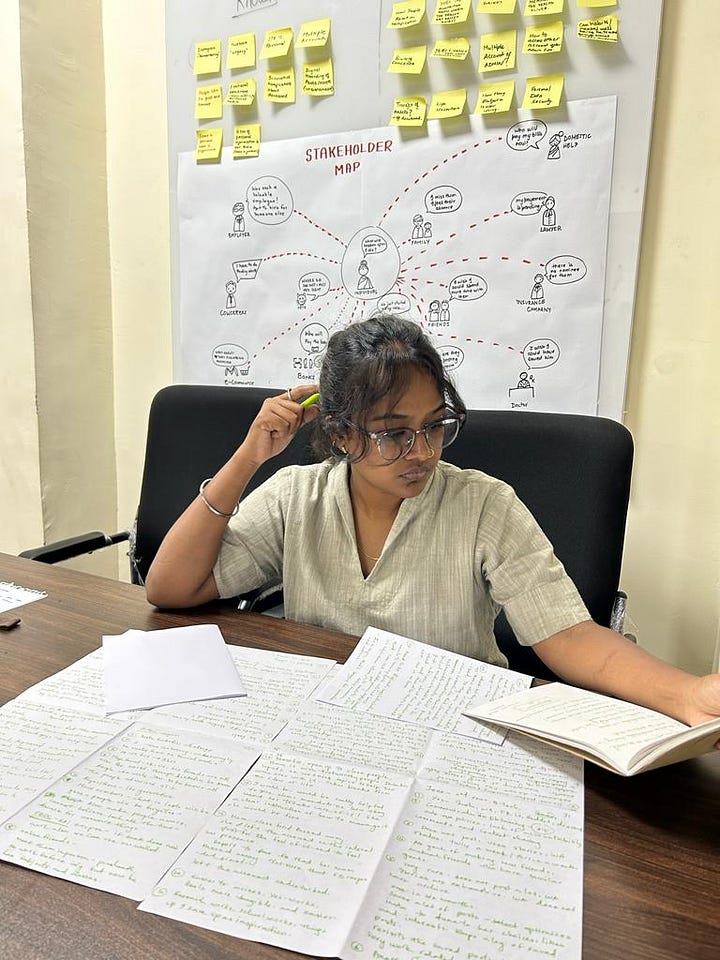
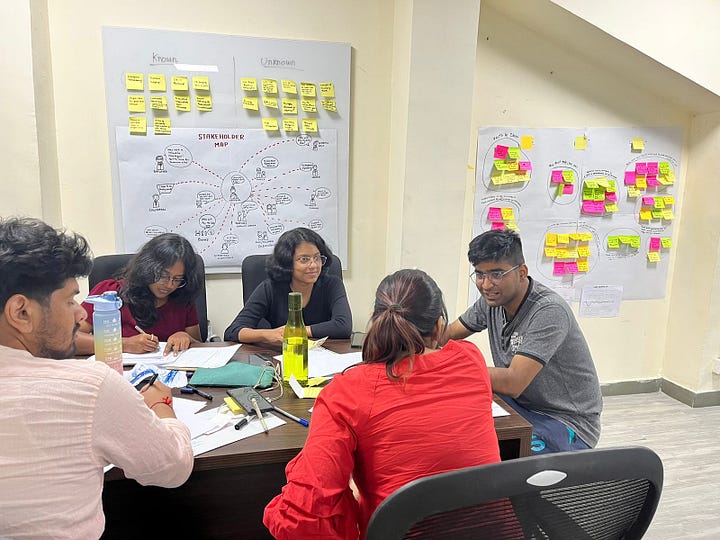
Re-stating the Design Brief
We iterated on the entire process one last time, connecting the dots backward, forwards, sideways, and in every possible way to understand the deep-rooted issues related to the design problem. But this time, we had proof: our personal user interviews and also those of the other groups.
We were able to refine the design problem even further and arrived at a crisp design problem statement. With broad smiles across our faces, we were all set for the presentation.
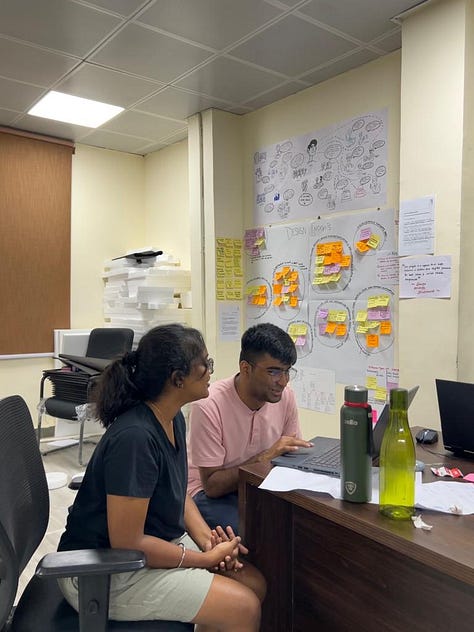
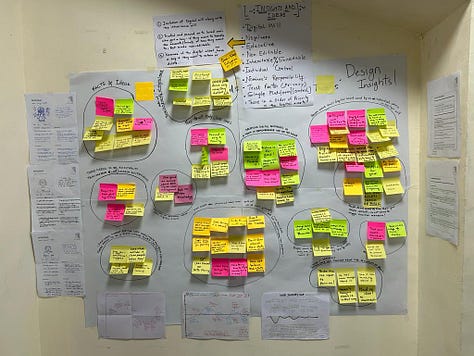

The Presentation
We received constructive feedback and a few comments on perspective shifts to see things better. Overall, week 1 of Design Thinking helped us understand one of the right methodologies to approach any design problem. And yes, "Trusting the process" helped. To be honest, I am looking forward to sitting through the next week of Design Thinking and the lessons it has to offer me. Will keep you all posted
Regards,
Varsha Anand :)
